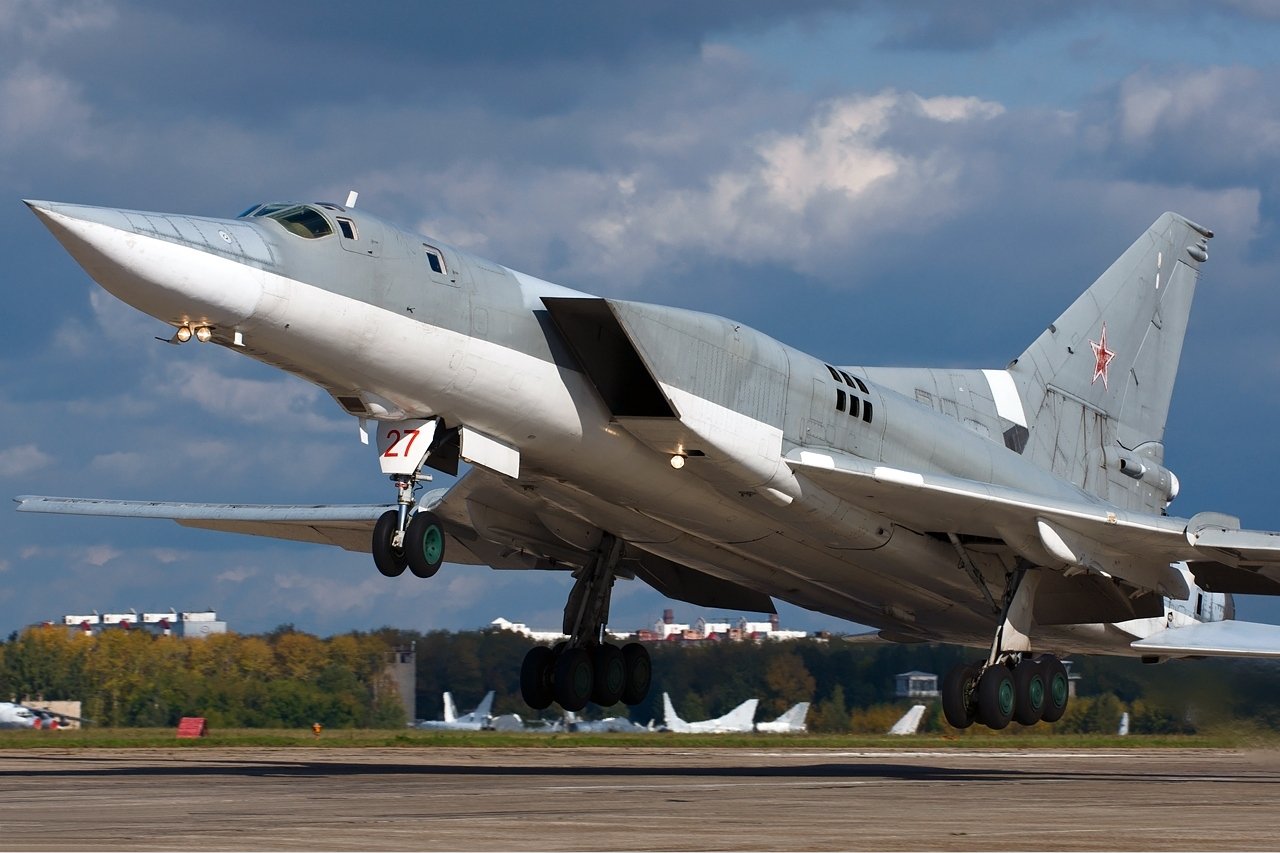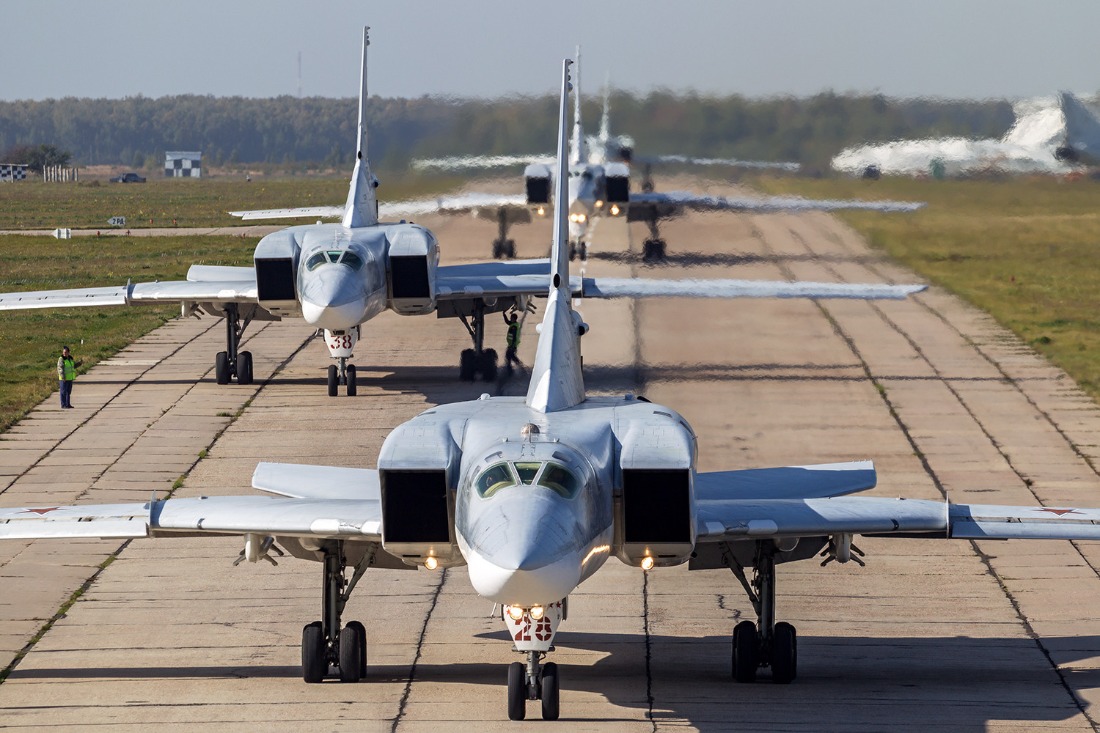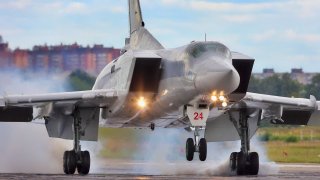Russia's Fighters and Bombers: 'Dropping Like Flies' in Ukraine But It Might Not Matter
Russia's air campaign in Ukraine, while battered by high losses, has adapted to ensure continued success. Despite struggling with equipment shortages and high attrition rates, Moscow has maintained its offensive air operations by leveraging drones, standoff munitions, and older Soviet-era aircraft.
What You Need to Know: Russia's air campaign in Ukraine, while battered by high losses, has adapted to ensure continued success. Despite struggling with equipment shortages and high attrition rates, Moscow has maintained its offensive air operations by leveraging drones, standoff munitions, and older Soviet-era aircraft.

-The Russian Air Force has adjusted its tactics to preserve airframes while softening Ukrainian lines with long-range strikes, gradually depleting Kyiv’s Western-supplied air defenses.
Russian Air Power Endures: Why Ukraine's Defenses Are Struggling to Keep Up
The future looks increasingly difficult for Ukraine’s defense.
Russia’s invasion of neighboring Ukraine has presented the world with a unique problem set. For the first time in decades, a hot war is being waged between the world’s great powers in Europe.
Although NATO is not directly involved in the war, it is the primary reason why Ukraine has sustained its war effort defending against the Russian invasion. Russia is directly engaged but, from the start of the war, given Ukraine’s resistance quotient, Moscow’s leaders knew they were squaring off against NATO, specifically the Americans, in Ukraine.
Airpower is a fundamental aspect of modern warfare. Yet, Russia’s airpower has failed to achieve total air dominance, even though its force is more advanced, better equipped, and far more numerous than the opposing Ukrainian Air Force. The Russians, despite what the Western press says, are still conducting airstrikes. However, the Russian forces are suffering through high attrition rates, increased strain on equipment, and loss of skilled pilots.

Regardless, the Russian war machine can sustain the increased operational tempo of the war, and the Russians can still conduct air attacks consistently.
At the start of the war, the air campaign was plagued by the same kinds of stunning losses that had defined the ground campaign. Because of the losses in the air, and the need to sustain an air campaign for air superiority over Ukraine, the Russians have adopted key strategies aimed at making their air war more effective.
Understanding the Air War
For starters, Russia has deployed drones and used standoff munitions. From Iran, Russia has purchased Shahed drones meant to overwhelm Ukrainian air defenses with mass rather than high-tech sophistication. The downside to this strategy is that it, at times, utilizes less precise, less effective munitions due to reported shortages of more advanced missile systems. Russia is also pulling loads of less advanced though numerous armaments from North Korea.
The constant deployment of mostly older warplanes, in many cases from the Soviet era, indicates that Russia is accelerating the age of these systems due to constant wear-and-tear and shoddy maintenance practices. Indeed, reports show that the Russian Aerospace Forces are flying fewer sorties into contested Ukrainian airspace compared to earlier in the conflict.
Reasons for this, however, might not be because the Russians are losing the war, as relentless Western propaganda insists. It might be just that the Russians have gotten smarter and adapted to the contested environment over Ukraine better.
Russian aerospace commanders want to preserve their airframes.
Plus, they can rely on drones and standoff munitions to make up for the decline in sorties rates over Ukraine. What’s more, one can see that the Russian Air Force is holding its own, despite the staggering losses, by the fact that the service has become more of a ground-attack force, in other words, the Ukrainian Air Force is not as much of a threat to Russian aircraft as it was at the start of the war.
Another factor the Russian Air Force has been made to contend with has been the redeployment of air force personnel into Ukraine as infantry. This has complicated the ability of the Air Force to conduct meaningful attacks on Ukraine.
Many in the West have rightly acknowledged the effectiveness of NATO-supplied air defenses against the Russian Air Force. Few, however, want to acknowledge that the Russian Air Force has remained in the fight, even obliterating those advanced Ukrainian air defense systems with standoff munitions from over the horizon to better preserve the aircraft.
More than that, though, those fancy Western-supplied air defenses are dwindling, thanks in large part to Russia’s use of these standoff munitions, and replacements for those destroyed air defense systems are lacking.
The Russians are Still Winning the Air War
So, Western governments have supplied Ukraine with aging F-16 fighters. Yet, a handful of these older systems, possibly piloted by Ukrainians who are not well trained to handle such fighters, will not, and have not, stopped the Russian Air Force from serving as an effective element in the unfriendly skies above Ukraine.
Meanwhile, despite some shortages, the overall Russian defense industrial base is humming along at a rate that few in the West believed was possible. The Russian industrial base, therefore, is doing a much better job of adapting to the situation in Ukraine than the overall Western defense industrial base.
Indeed, Ukrainian air defenses are still effective at downing Russian aircraft when they are within range. But the Russians are doing well enough in resupplying their forces that they can continue striking at Ukrainian positions along the frontline. Western analysts have cheered the Ukrainians on for so long and so hard that they appear to have abandoned any pretense of objectivity.
The Russians can continue churning out Soviet-era airframes like sausages and can now use standoff munitions and Iranian-produced drones to soften up Ukrainian lines, keeping their planes away from those Ukrainian air defenses. And Moscow can do this for far longer than Kyiv’s forces can hold out.
Buckle up. The Russian Air Force continues its mostly effective air war against Ukraine. The Ukrainians, unfortunately, can only hold out for so much longer before even those Western-provided air defenses are destroyed and Ukrainian positions along the front are overrun. This is the nature of Russian attritional warfare. It is not flashy or fast. But it gets the job done for Moscow.
Author Experience and Expertise: Brandon J. Weichert
Brandon J. Weichert, a National Interest national security analyst, is a former Congressional staffer and geopolitical analyst who is a contributor at The Washington Times, the Asia Times, and The-Pipeline. He is the author of Winning Space: How America Remains a Superpower, Biohacked: China’s Race to Control Life, and The Shadow War: Iran’s Quest for Supremacy. His next book, A Disaster of Our Own Making: How the West Lost Ukraine, is due October 22 from Encounter Books. Weichert can be followed via Twitter @WeTheBrandon.
All images are Creative Commons or Shutterstock.
From the Vault


